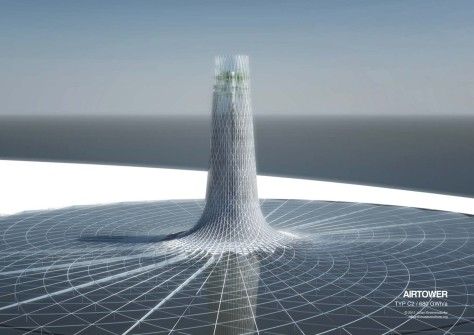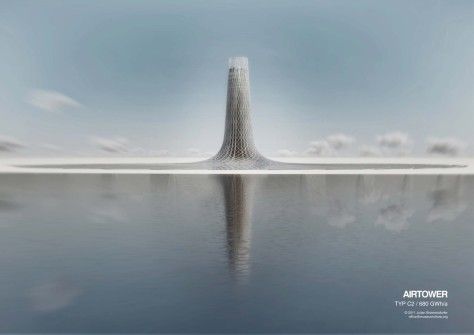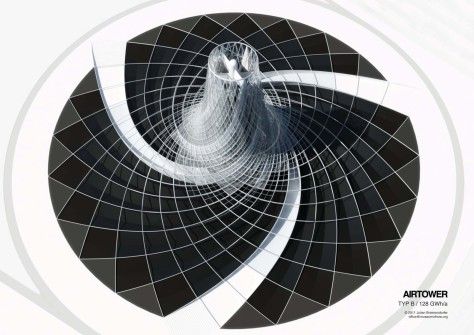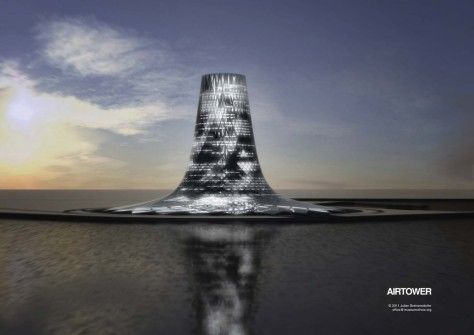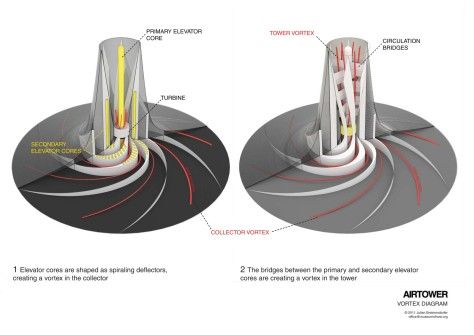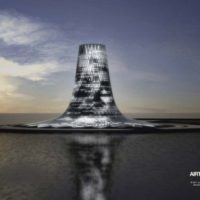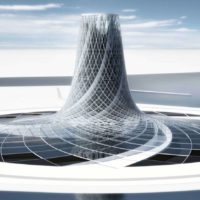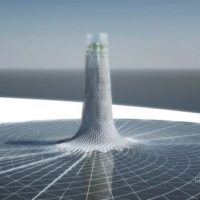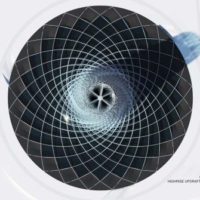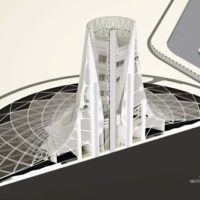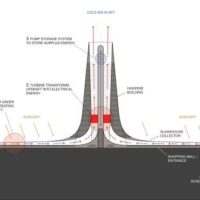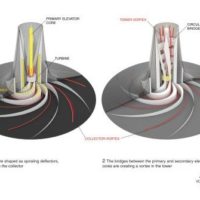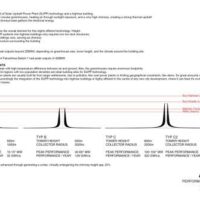Airtower
The Airtower, by Julian Breinersdorfer Architekten, is conceived as a skyscraper that uses SUPP (Solar Updraft Power plant) technology. SUPP is a renewable energy plant that utilizes solar power for the generation of electricity, and can be combined with various other technologies to increase the power output, like photo-voltaic panels. Therefore, the Airtower design uses solar energy to drive its inbuilt wind turbines and produce electricity.
The Airtower consists of an extremely tall, centrally located tower that gradually tapers inwards as it rises. Surrounding its base is a wide greenhouse-like roofed collector structure. Sunlight heats the air beneath this greenhouse, which causes a hot air updraft in the tower due to stack effect. This hot air updraft drives the wind turbine placed in the chimney base and its movement generates electrical energy.
Two factors are crucial to decide the power output: The Base Collector structure and Chimney height. A base with a wider radius would be able to collect and heat a greater volume of air, whereas a taller chimney would increase the pressure difference due to the stack effect. The Airtower core consists of bridges connecting the primary and secondary elevator shafts, which have been designed as spiraling deflectors that create a vortex in the tower.
Since SUPPs occupy a vast area of land, they are preferably located in deserts and other low value regions. These regions also provide a significant surface temperature difference between air and ground. High performance power plants are usually unclean, however, their integration into a high rise building would allow for the SUPPs to be located right in the midst of city development.
Depending on factors like climate around the site, base radius of the plant, and tower height, the Airtower would be able to achieve a peak output potential beyond 200 MW. That’s roughly enough electricity for around 200,000 typical households. In the sustainability context, such design restricts the adverse effect greenhouse gases cause to the atmosphere. With facts like these, one can only imagine the potential this Airtower design holds. Can this be one of the answers to the question on how to leave a better planet for the future generations?
BY: Priyanka Shah
- Courtesy of Julian Breinersdorfer Architekten
- Courtesy of Julian Breinersdorfer Architekten
- Courtesy of Julian Breinersdorfer Architekten
- Courtesy of Julian Breinersdorfer Architekten
- Courtesy of Julian Breinersdorfer Architekten
- Courtesy of Julian Breinersdorfer Architekten
- Courtesy of Julian Breinersdorfer Architekten
- Section
- Section
- Diagram
- Diagram


